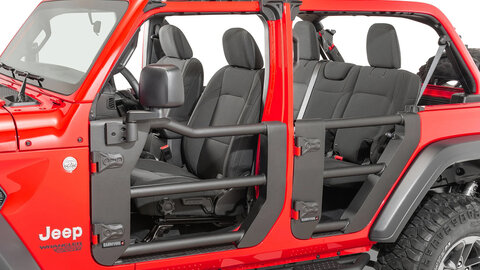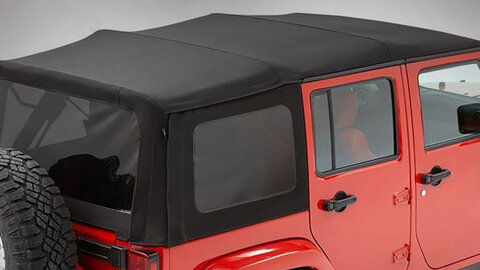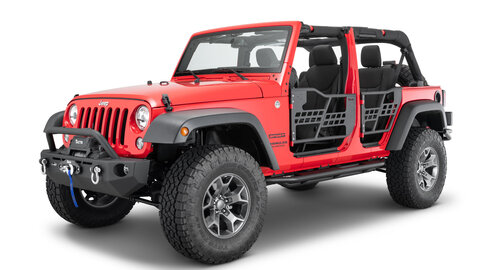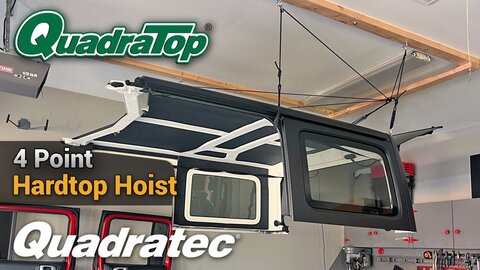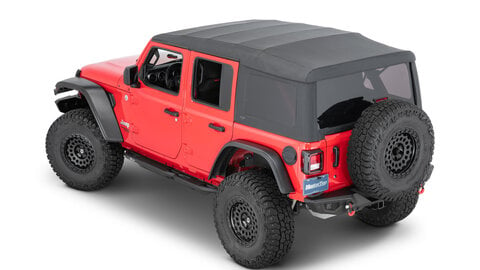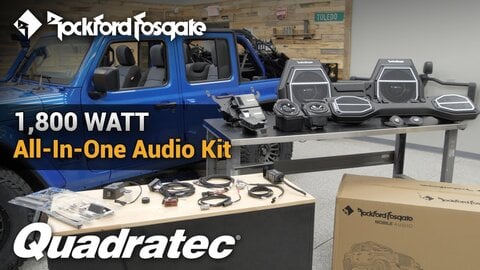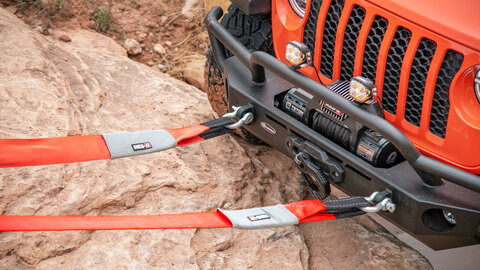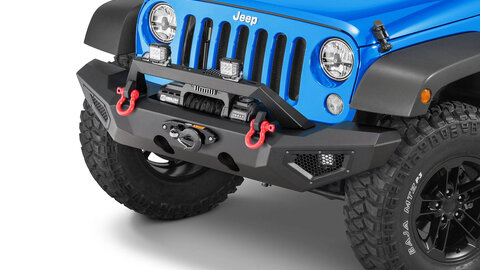
by Torque Staff
A Jeep's clutch system is an oft-forgotten part of a manual transmission. It is the mechanical device that transfers all power from the engine into the transmission of a vehicle, and without a properly operating system, power transfer and gear shifting would be very difficult.
The clutch is located between the engine flywheel and the transmission and is often housed within the bellhousing to protect it from external contaminants. Older vehicles had more of a fully open design.
The first section of this system starts at the flywheel. Connected to the flywheel is the pressure plate, with the clutch-friction disc between the two items. On the outside of the pressure plate is the clutch control unit or the throwout bearing. This throwout bearing is moved by the use of a clutch fork, while that fork is operated by a slave cylinder — which is controlled by the master cylinder and ultimately controlled by the clutch pedal.

Pressure Plate: The pressure plate assembly is secured to the flywheel via bolts connecting the cover stamping to the flywheel. During engagement, the pressure plate assembly clamps the disc assembly against the flywheel, transmitting engine power to the transmission. During disengagement, power flow is interrupted when the pressure plate no longer clamps the disc against the flywheel. Instead, the pressure plate lifts away from the flywheel, creating a gap large enough for the disc to disengage from the flywheel, enabling the driver to shift gears.

Clutch Disc: The disc assembly is mounted to the input shaft, between the pressure plate assembly and the flywheel. During engagement, the disc slides forward on the input shaft and becomes solidly clamped, or “engaged”, between the flywheel and the pressure plate assembly. During disengagement, the disc is no longer engaged. Although the pressure plate assembly and flywheel continue rotating, the input shaft and disc are no longer being rotated by the engine.

Pilot Bushings: Pilot bearings and bushings serve as a guide and seat for the transmission input shaft during engagement and disengagement when the flywheel and pressure plate assembly turn at speeds different than the input shaft and disc assembly, the pilot bearing rotates.

Throw-out Bearing: Release bearings are designed to pivot forward and compress the pressure plate levers, which disengages the clutch system. Although release bearings are all designed for the same basic function, they come in many shapes and sizes because they must work in conjunction with a variety of actuation systems.












